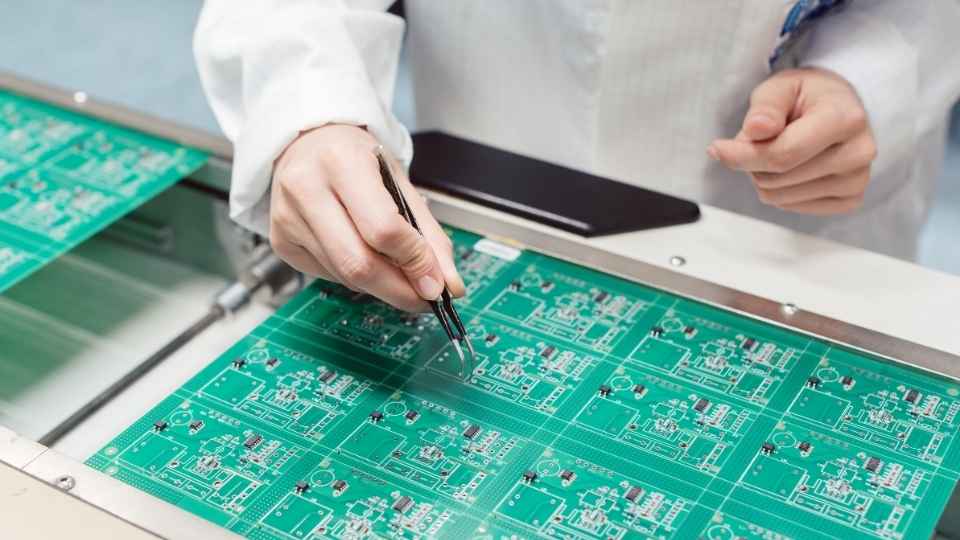
Are you tired of the guesswork and frustration that comes with circuit analysis? Look no further. In this article, we delve into the world of circuit analyzers and explore how frequency counters and signal tracers can revolutionize your analysis process.
These innovative tools not only enhance accuracy but also provide a deeper understanding of complex circuits. Get ready to unlock the true potential of your analysis, as we uncover the power of frequency counters and signal tracers in optimizing your circuit analysis journey.
Key Takeaways
- Frequency counters accurately measure the frequency of electronic signals and help identify problems such as unwanted oscillations or malfunctioning components.
- Signal tracers are essential instruments that trace and identify signals within a system, helping locate faults or malfunctions quickly.
- Frequency counters and signal tracers enhance the analysis process by providing accurate information about circuit behavior and assisting in troubleshooting complex circuits.
- Leveraging frequency counters and signal tracers enables engineers to achieve a more precise and comprehensive analysis of electronic systems, empowering them with precise measurements and detailed insights for effective circuit analysis.
The Importance of Frequency Counters in Circuit Analysis
Frequency counters play a crucial role in circuit analysis by accurately measuring the frequency of electronic signals, enabling engineers to assess the performance and troubleshoot any issues in the circuit. These devices provide a precise measurement of signal frequency, allowing engineers to identify problems such as unwanted oscillations or malfunctioning components. By analyzing the frequency of a signal, engineers can determine if it is within the desired range and meets the circuit's requirements. Frequency counters offer high accuracy and resolution, making them essential tools for optimizing circuit performance. With their ability to measure frequencies ranging from kilohertz to gigahertz, these devices are versatile and suitable for various applications. Understanding how frequency counters work and interpreting their readings is fundamental for effective circuit analysis.
Now that we have explored the importance of frequency counters in circuit analysis, let's dive into another key tool: understanding signal tracers.
Signal tracers, an essential instrument in the field of electrical engineering, provide valuable insights into circuit behavior and aid in troubleshooting by tracing and identifying signals within a system. These devices serve as a powerful tool for engineers and technicians, enabling them to analyze the flow of signals and locate faults or malfunctions quickly.
Signal tracers work by injecting a signal into a circuit and then detecting and amplifying that signal at different points throughout the system. This allows users to identify the presence of a signal, determine its strength, and pinpoint any abnormalities or discontinuities.
With their precise measurement capabilities, signal tracers enable engineers to diagnose issues such as short circuits, open circuits, faulty components, or improper connections with ease. By providing accurate information about circuit behavior, these instruments empower professionals to make informed decisions regarding repairs or modifications that will optimize system performance.

Exploring the Functionality of Frequency Counters in Circuit Analysis
In the field of electrical engineering, understanding the functionality of frequency counters is crucial for accurately assessing and diagnosing circuit performance.
Frequency counters are electronic instruments used to measure the frequency of signals in a circuit. They provide valuable information about the behavior and characteristics of these signals, aiding engineers in troubleshooting and optimizing circuit performance.
Frequency counters work by counting the number of cycles or oscillations that occur within a given time frame. This allows engineers to determine the frequency, or rate at which a signal repeats, with great accuracy. By analyzing the frequency of signals in a circuit, engineers can identify issues such as improper timing, harmonic distortion, or noise interference.
Frequency counters also enable engineers to measure other important parameters such as pulse width, duty cycle, and period. These measurements help assess signal quality and ensure that circuits operate within desired specifications.
With their ability to provide precise frequency measurements and additional analysis features, frequency counters play a vital role in electrical engineering applications. They empower engineers with accurate data for efficient troubleshooting and optimization of circuits, ultimately leading to enhanced functionality and performance freedom for various electronic systems.
How Signal Tracers Enhance Your Analysis Process
When examining electronic systems, signal tracers prove to be an invaluable tool for enhancing the analysis process and gaining valuable insights into circuit performance. A signal tracer is a device that allows engineers and technicians to trace the path of an electrical signal through a circuit. This can be particularly useful when troubleshooting complex circuits or identifying faulty components.
Signal tracers are typically equipped with features such as adjustable sensitivity, audio amplification, and frequency response control, allowing for precise signal detection and analysis. By connecting the tracer to different points in a circuit, engineers can visually and audibly observe the behavior of signals, helping them identify abnormalities or inconsistencies. This information can then be used to diagnose issues accurately and make informed decisions regarding circuit optimization or repair strategies.

While signal tracers are excellent tools for analyzing individual signals within a circuit, they can be further complemented by leveraging frequency counters for more accurate and comprehensive circuit analysis.
Leveraging Frequency Counters and Signal Tracers for Accurate Circuit Analysis
By combining the capabilities of frequency counters and signal tracers, engineers can achieve a more precise and comprehensive analysis of electronic systems. These tools work together to provide valuable insights into the behavior and performance of circuits, allowing for efficient troubleshooting and optimization.
Here are three ways in which the combination of frequency counters and signal tracers enhances circuit analysis:
Accurate Frequency Measurement: Frequency counters accurately measure the frequency of signals, enabling engineers to identify oscillation issues or irregularities in electronic systems.
Signal Tracing Capability: Signal tracers help locate signal paths within a circuit, allowing engineers to identify faulty components or connections that may be affecting system performance.
Time Domain Analysis: By measuring both frequency and time domain characteristics of signals, engineers can gain a deeper understanding of circuit behavior, such as signal propagation delays or phase relationships.
Overall, leveraging frequency counters and signal tracers empowers engineers with precise measurements and detailed insights necessary for effective circuit analysis.

Frequently Asked Questions
How Does a Frequency Counter Work and What Kind of Signals Can It Measure?
A frequency counter is an electronic device used to measure the frequency of a signal. It works by counting the number of cycles in a given time period. It can measure various types of signals, including analog and digital signals, across a wide range of frequencies.
Can a Frequency Counter Be Used to Measure the Frequency of Both Analog and Digital Signals?
Yes, a frequency counter can measure the frequency of both analog and digital signals. It works by counting the number of signal cycles in a given time period, regardless of the nature of the signal being measured.
Are Frequency Counters Only Used for Measuring Frequency, or Do They Have Other Functions as Well?
Frequency counters are not limited to measuring frequency alone; they also offer additional functions. These include measuring period, duty cycle, and pulse width, providing a comprehensive analysis tool for various electronic circuits and systems.
What Are Some Common Applications of Signal Tracers in Circuit Analysis?
Signal tracers have various applications in circuit analysis, including troubleshooting faulty components, identifying signal paths, and testing the integrity of electronic circuits. They optimize analysis by providing real-time visual and audible feedback for accurate diagnostics.
Can Signal Tracers Be Used to Identify Specific Components or Faults in a Circuit?
Yes, signal tracers can be used to identify specific components or faults in a circuit. They allow for precise and detailed analysis by detecting signals and tracing them through the circuit, enabling technicians to pinpoint issues efficiently.
 Basic Electronics ConceptsEssential ToolsCircuit Design BasicsMicrocontrollersDIY Electronics ProjectsRoboticsPrivacy PolicyTerms And Conditions
Basic Electronics ConceptsEssential ToolsCircuit Design BasicsMicrocontrollersDIY Electronics ProjectsRoboticsPrivacy PolicyTerms And Conditions
